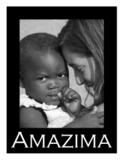 I have read a number of books and articles on how to get the most out of story time and have used many of the ideas when reading to my own children. These tips have been helpful and I will share my favorites below. Before I share these great tips, I have to share a little secret. There have been a number of times that I have minimized learning during story time and my husband has as well. Just for the fun of it, I will first share my own "what not to do" tips for minimizing learning during story time. These are all things my husband or I have done when we have been short on time, tired, or just not in the mood to read out loud.
I have read a number of books and articles on how to get the most out of story time and have used many of the ideas when reading to my own children. These tips have been helpful and I will share my favorites below. Before I share these great tips, I have to share a little secret. There have been a number of times that I have minimized learning during story time and my husband has as well. Just for the fun of it, I will first share my own "what not to do" tips for minimizing learning during story time. These are all things my husband or I have done when we have been short on time, tired, or just not in the mood to read out loud.How to Minimize Learning During Story Time
1. When reading to small children who won't notice, skip large chunks of repetitive text while still making the story flow relatively well. This works especially well when reading "Green Eggs and Ham". You can also occasionally skip pages and if your child catches you just say, "Oops, I skipped a page", then go back and read it. This second tip was used when reading "Go Dog. Go!" for the twentieth time.
2. Read very quickly so story time is over faster.
3. Pick the books yourself and choose the shortest ones you have with the least amount of text.
4. Read in a monotone voice with no expression. I have never done this but my husband has. This has caused me to yell to him from another room "Use some expression please! You sound like a robot reading stories tonight."
These are the things you should not be doing but I bet most parents have done from time to time. Now for the tips to help your child get the most out of story time.
How to Maximize Learning During Story Time
1. Read with expression. You can also use fun or silly voices to differentiate between characters. My husband, who once in a great while reads like a robot when he is tired, also has a repertoire of really funny voices that the kids love. The picture above is my youngest brother reading to his three nephews using his own very silly voices.
2. Identify the title, author, and illustrator. If you have read other books by the same author or illustrator, you can mention those books as well. You might also have your child look at the illustrations and see if they can guess what other books were done by the same illustrator. Tell your child a little something about the author and illustrator after you have finished reading the book.
3. Ask your child what he thinks the book is about by looking at the cover. You can give clues if your child can't think of anything.
4. Point to each word as you read it. This works best with books that aren't too long or when the text is at the bottom of the page so you are not blocking the illustrations. This allows your child to see the words you are reading and how words are read in a left to right direction.
5. When reading books that have been read to your child a number of times, stop at keywords and allow your child to provide the word.
6. When reading a story with a good plot, you can occasionally ask your child what they think will happen next.
7. When you are finished reading a story, you can talk about similar experiences that may have happened to you or your child if this is applicable. Children are typically very interested in stories from their parent's childhoods and sharing these stories creates positive memories. I still remember lots of stories my parents told me about when they were little. Children also love to hear stories told about things they did when they were younger as well.
8. After reading a story, ask your child what the best part of the story was and what the worst part was. Don't quiz your child about the story.
9. When the story is finished, ask your child if they would like to draw a picture of their favorite character or part of the story. You can also use tracing paper to trace a character or page in the story which is fun for children. They might even decide to trace the words as well.
10. Help your child act out a favorite story with stuffed animals, dolls, plastic or wooden people, props, felt figures, or anything you have in the house that works. "Goldilocks and the Three Bears" is a great story to act out because it is easy for children to remember and most people have a doll and three stuffed bears in their house.










1 comment:
we love studying art this way too.
Lisa
www.houseofmanyblessings.blogspot
Post a Comment